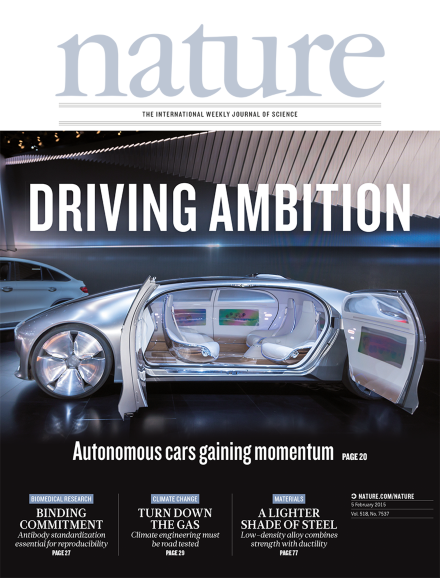Volume 518 Issue 7537, 5 February 2015
Editorial
World View
Research Highlights
Social Selection
Seven Days
News
Correction
News Feature
Comment
Books & Arts
Correspondence
Obituary
News & Views
Article
Letter
Toolbox
-
Programming: Pick up Python
Collection:

